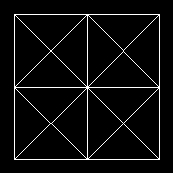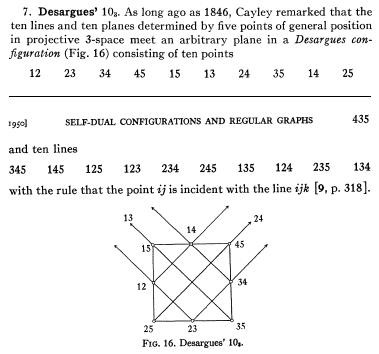"In any geometry satisfying Pappus's Theorem,
the four pairs of opposite points of 83
are joined by four concurrent lines."
-- H. S. M. Coxeter (see below)
Part II related the the Pappus configuration to the "Diamond Star" figure--

Stylized
version of the
"Diamond Star" in Part I above
Coxeter, in "Self-Dual Configurations and Regular Graphs,"
also relates Pappus to this figure."Diamond Star" in Part I above
Some excerpts from Coxeter—

The relabeling uses the 8
superscripts
from the first picture above (plus 0).
The order of the superscripts is from a
Singer 8-cycle in the Galois field GF(9).
The relabeled configuration is used in a discussion of Pappus—from the first picture above (plus 0).
The order of the superscripts is from a
Singer 8-cycle in the Galois field GF(9).

Coxeter here has a note referring to page 335 of G. A. Miller, H. F. Blichfeldt, and L. E. Dickson, Theory and Applications of Finite Groups, New York, 1916.
Coxeter later uses the the 3×3 array (with center omitted) again to illustrate the Desargues configuration—

"The value
of Desargues' theorem and the reason
why the statement of this theorem has survived through the centuries,
while other equally striking geometrical theorems have been forgotten,
is in the realization that Desargues' theorem opened a horizon
of possibilities that relate geometry and algebra
in unexpected ways."



No comments :
Post a Comment